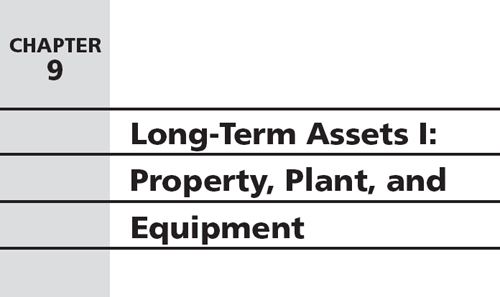
The evolution of the circulating and noncirculating capital distinction of assets and liabilities into the working capital concept has been accompanied by the separate classification and disclosure of long-term assets. In this chapter we examine one of the categories of long-term assets: property, plant, and equipment. Long-term investments and intangibles are discussed in Chapter 10.
Property, Plant, and Equipment
The items of property, plant, and equipment generally are a major source of future service potential to the enterprise. These assets represent a significant commitment of economic resources for companies in capital-intensive industries, such as Ford in the automobile manufacturing industry, Boeing in the airplane manufacturing industry, and ExxonMobil in the oil exploration and refining industry. Such companies can have as much as 75 percent of their total assets invested in property, plant, and equipment. The valuation of property, plant, and equipment assets is of interest to users of financial statements because it indicates the physical resources available to the firm and can also give some indication of future liquidity and cash flows. These valuations are particularly important in capital-intensive industries because property, plant, and equipment constitutes a major component of the company's total assets. The objectives of plant and equipment accounting are ...
Get Financial Accounting Theory and Analysis: Text and Cases, 11th Edition now with the O’Reilly learning platform.
O’Reilly members experience books, live events, courses curated by job role, and more from O’Reilly and nearly 200 top publishers.

